Nearly any freshwater aquarium can benefit from an algae eater like the Dwarf Sucking Catfish. Ideal for nano tanks and planted communities, the little herbivores in the Otocinclus genus are peaceful and active eaters of algae. Between Otocinclus vestitus vs vittatus, is the Silver or Common Oto a better choice for your tank?
Otocinclus Vestitus VS Vittatus – Quick Overview
Otocinclus vestitus
Nickname
Silver Otocinclus
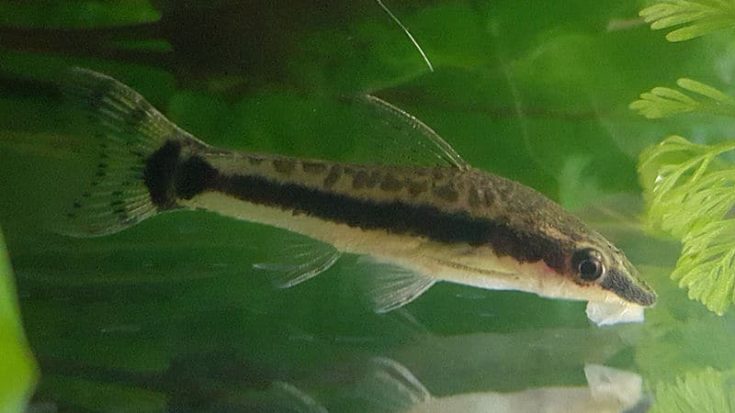
Appearance Differences
Grey, mottled top half of the body with a thin horizontal lateral line running from the snout to the base of the caudal peduncle
Ideal Water Temperature
77 to 86°F
Location of Native Populations
Tributaries of Rio Ambyiacu in Peru
Common Otocinclus
Nickname
Common Otocinclus
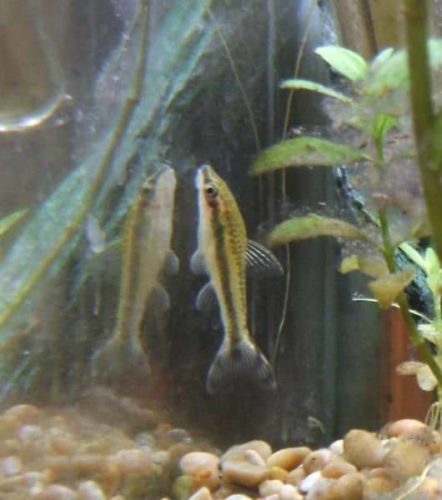
Appearance Differences
Dark horizontal line running down the lateral line from snout to the caudal peduncle, with a bold white line right above
Ideal Water Temperature
70 to 79°F
Body Shape
Location of Native Populations
Introduction to Otocinclus Algae Eaters
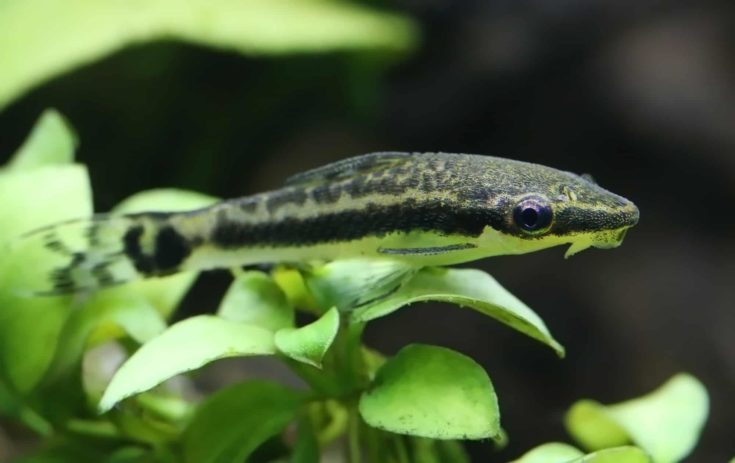
When it comes to algae-eating fish, there’s few that can match up to the friendly, shy little herbivores in the Otocinclus genus. Native to small rivers and streams across South America, these peaceful and easy-to-care-for fish are an ideal option for planted community aquariums 10 gallons and up.
What Are Otocinclus Fish?
Otocinclus (pronounced Otto-sin-klus), referred to as Ottos or Otos in the aquarium trade, are a genus of small herbivorous suckerfish in the Loricariidae or armored catfish family. They are a popular option for aquariums of all sizes due to their peaceful nature, entertaining shoaling behaviors and their algae eating abilities.
These fish are especially regarded for their ability to consume problematic diatomic (brown) algaes and are often purchased in groups or shoals of 3 to 6 to prevent algae outbreaks. They are rarely if ever bred in captivity, so fish available in stores have usually been captured as juveniles from native populations.
Since most fish derive from wild stock, they are frequently identified under the generic name “Otocinclus” rather than being properly labeled by species. Even when species names are used in stores, they are often incorrect. Many novice fish keepers (and sellers) have no idea that there are multiple species of otos!
How Many Species of Otos Are There?
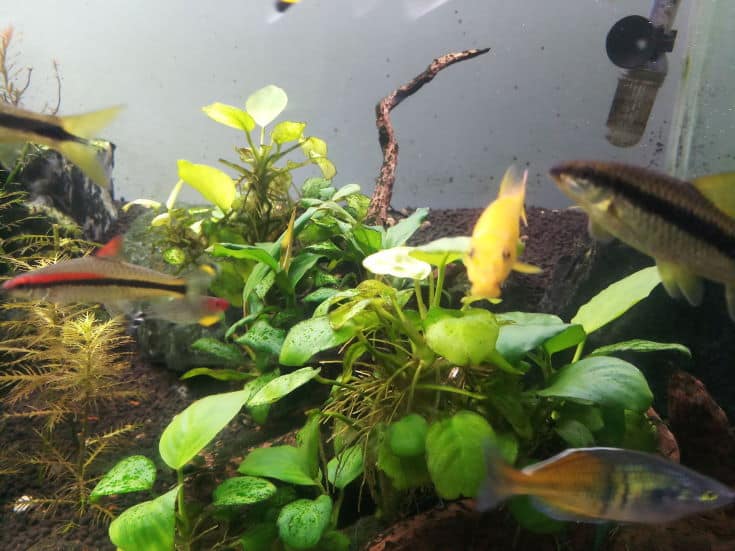
Otos are practically must-have fish for planted aquariums, since algae is so easily introduced along with your live plants and outbreaks can be hard to treat once it takes over. But which species of Oto should you look for, and does it matter in terms of their size, appearance, or algae-eating performance in your tank?
There are 19 recognized species in the Otocinclus genus, but only a handful are typically available in the US aquarium trade. These algae eaters usually grow between 1 to 2 inches in length and have a mix of brown, grey, and silver-colored markings. The five species you’re most likely to come across in the US include:
- The Common Oto (Otocinclus vittatus) is, as their nickname suggests, the most common species you’re likely to see for sale in pet stores and online, and typically has brown and white markings with a white belly.
- The smaller Dwarf Oto (Otocinclus macrospilus) is another popular nano fish and typically reaches a maximum of about 1-inch in length as adults. They have similar coloration to the Commons and Goldens but can be distinguished by the markings on their caudal fin (tail).
- The Golden Oto (Otocinclus affinis) is nearly identical to the Common but has subtle, golden-colored browns. This species is hard to find in the US and is frequently and almost universally misidentified in pet stores.
- The distinctive black-and-white marked Zebra or Tiger Oto (Otocinclus cocama) is the most easily identifiable member of the genus and is one of the rarest species to see in stores.
- The Silver Oto (Otocinclus vestitus) looks very much like the Common, Golden and Dwarf Otos but shows more silver coloration amid the brown on their upper bodies.
Which Species of Oto Is the Best Algae Eater?
There’s no appreciable difference between the species in terms of their algae consumption or personalities. I’ve noticed that many big-box stores don’t even identify which species they are selling, and instead just have generic “Otocinclus” tanks, so you may not even know which type(s) you have in your shoal!
It can be difficult to tell the species apart in a mixed tank, and in some cases nearly impossible without using a microscope to examine their lateral line for minute differences. Let’s take a second to compare the Common Oto and the rarer Silver Oto in terms of their appearance and care requirements.
What’s the Difference Between Otocinclus vestitus vs Otocinclus vittatus?

O.vittatus (Common Oto) has a thick horizontal line following the lateral line from snout (nose) to caudal peduncle (base of tail) with a bold white line right above. O.vestitus (Silver Oto) has a mottled grey and brown upper body with a thin lateral line running from snout to caudal peduncle, and lacks the white stripe.
Natural Range
The definitive way to correctly identify species of Otocinclus from each other depends on knowing the location they were collected from in the wild. While populations of Otos are found in streams throughout South America east of the Andes, the species inhabit distinct territories with little known overlap:
- Common Otos (O.vittatus) are found in streams surrounding the Rio Paraguay tributary system in Brazil.
- Silver Otos (O.vestitus) are limited to the Rio Ambyiacu regions of Peru.
Care Requirements and Temperature Preferences
There aren’t many differences between species of Otos in terms of their care requirements. Aquarium algae can’t provide them with a balanced diet, so supplement your Otos with commercial algae wafers and spirulina pellets, and provide regular treats of fresh blanched veggies like zucchini, peas and cucumber.
The one notable difference between the species are their preferred temperature ranges, which do vary a bit depending on their location of origin. In general, Otos do well in water between 72 to 82°F. But the Common Oto does better in cooler water from 70 to 79°F, while the Silver’s prefer things a bit warmer at 77 to 86°F.
Conclusion
It doesn’t really matter which species of Otocinclus you end up with, since both the Common and Silver Otos are similar in size, behavior, temperament and diet. You may prefer to search out the rarer Silver species if your tank’s temperature is over 80°F, since they like it warmer, but either species is a great option for planted aquariums!
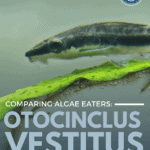
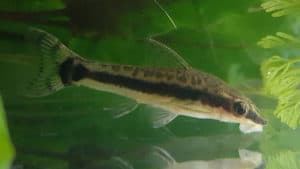
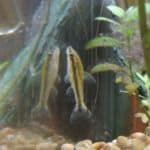
Hi Jen –
I have some otos already, and of course, I don’t know which specie. Needing more, will otos of different species school or shoal together? I know otos like to be in groups like corys do, but it seems more crucial with corys to have the same species together vs mixed.